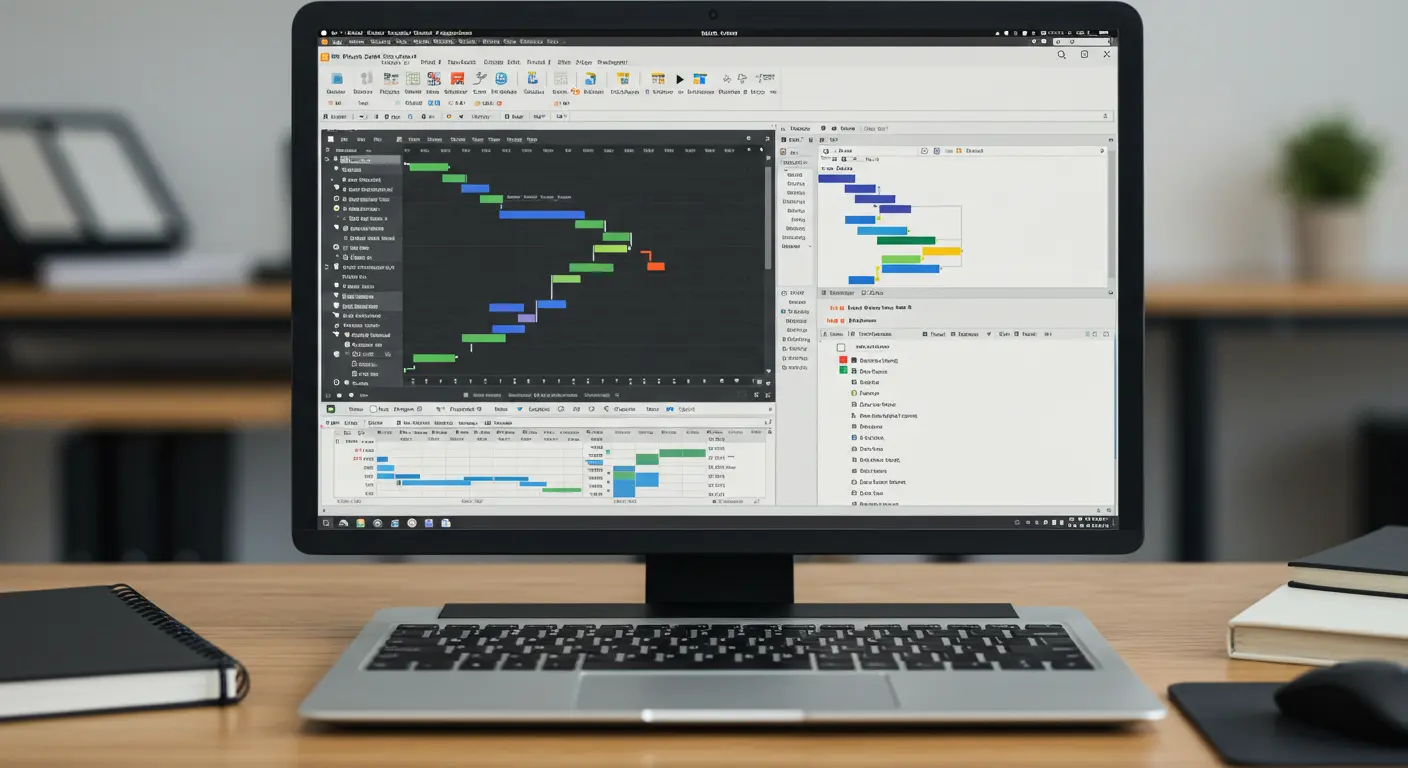21 Must-Have Excel Templates & Spreadsheets for Optimal Efficiency
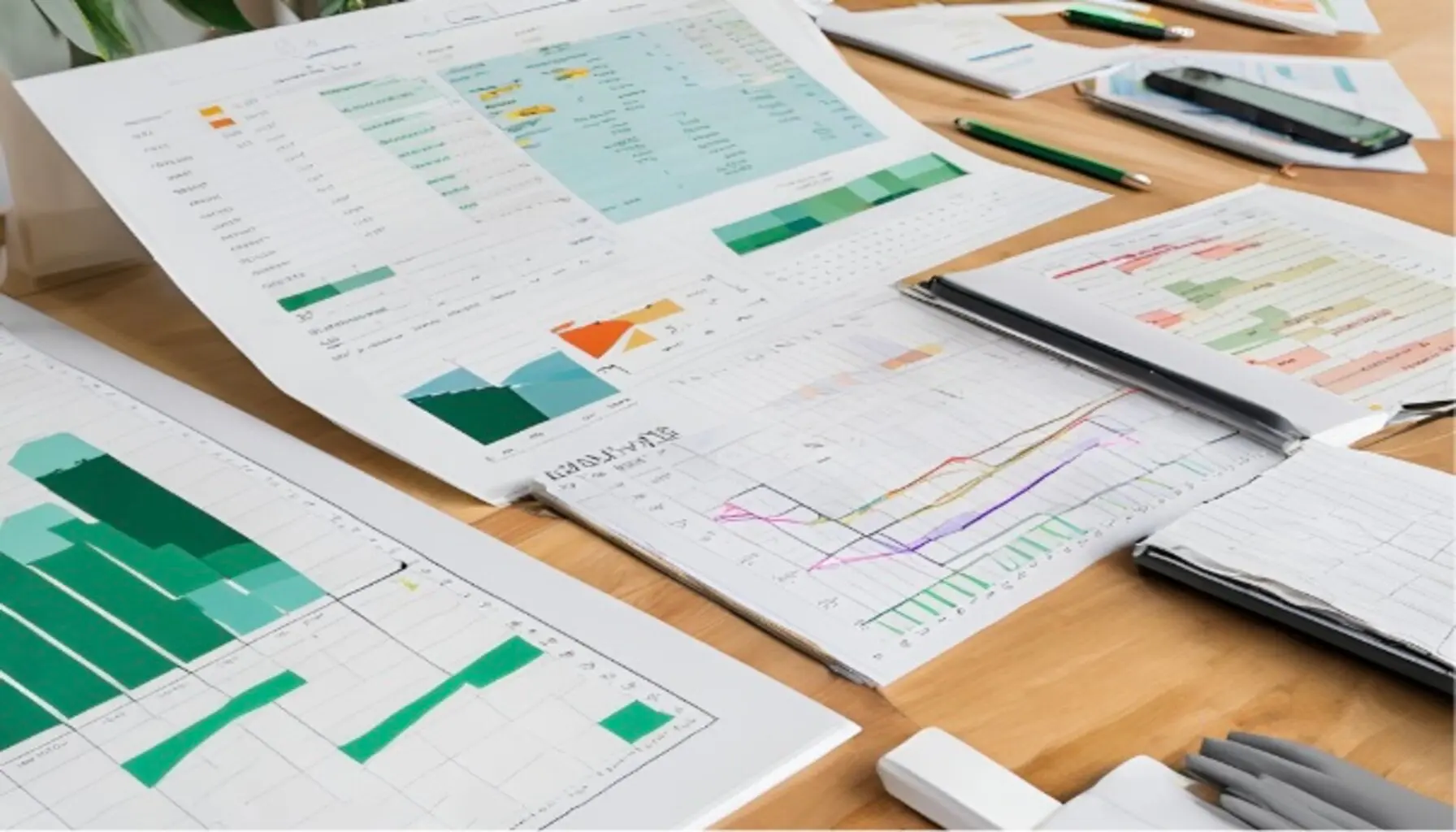
In the dynamic world of project management, having the right tools at your fingertips can make the difference between success and struggle. Microsoft Excel, with its versatility and ubiquity, remains a cornerstone in many project managers’ toolkits. This comprehensive guide explores 21 must-have Excel spreadsheets and templates that can revolutionize your project management approach, boost efficiency, and drive successful outcomes.
Why Excel for Project Management?

Before diving into the templates, let’s briefly discuss why Excel remains a popular choice for project management:
- Accessibility: Most professionals are familiar with Excel, reducing the learning curve.
- Flexibility: Easy to customize and adapt to specific project needs.
- Integration: Seamlessly works with other Microsoft Office tools.
- Cost-effective: Often already available in most business environments.
- Powerful features: Advanced functions and formulas for complex calculations.
Now, let’s explore each template in detail, discussing their features, benefits, and practical applications.
Gantt Chart Template

A Gantt chart is a visual representation of a project schedule, showing the start and finish dates of various elements of a project. This powerful tool helps managers track tasks, dependencies, and progress over time.
Key Features
- Task breakdown structure
- Start and end dates for each task
- Visual timeline representation
- Task dependencies
- Progress tracking
How to Use
- List all project tasks in the left column.
- Enter start and end dates for each task.
- Use Excel’s built-in bar chart feature to create the visual timeline.
- Color-code bars to represent different task categories or progress status.
Pro Tip
Use conditional formatting to automatically change the color of task bars based on their status (e.g., green for completed, yellow for in progress, red for delayed).
Example
| Task | Start Date | End Date | Duration (Days) | Progress |
| Planning | 01/01/2024 | 15/01/2024 | 15 | 100% |
| Design | 16/01/2024 | 31/01/2024 | 16 | 75% |
| Development | 01/02/2024 | 29/02/2024 | 29 | 50% |
| Testing | 01/03/2024 | 15/03/2024 | 15 | 0% |
Project Status Report Template
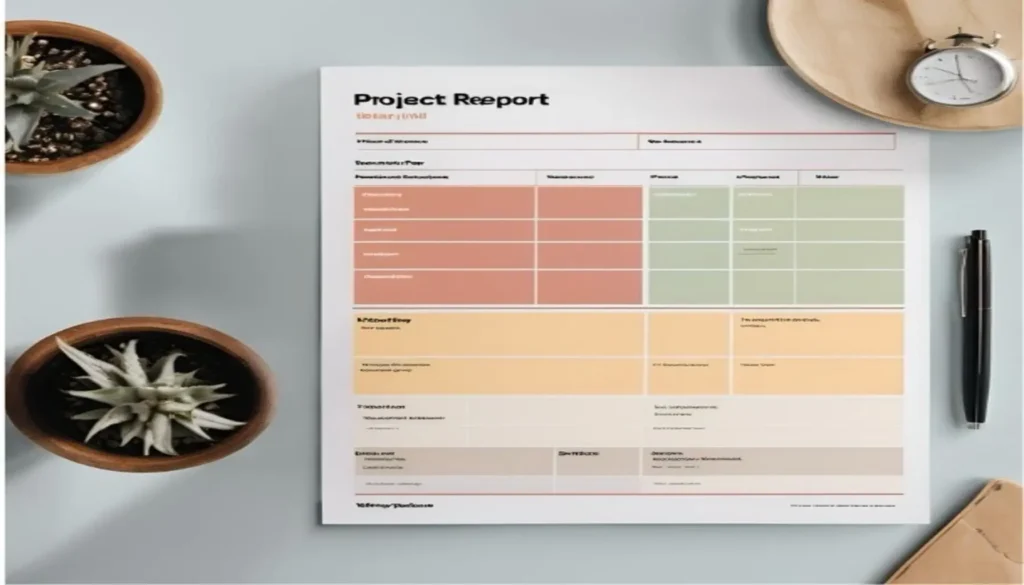
Regular status updates are vital for keeping stakeholders informed and aligned. This template provides a structured format for reporting project progress, highlighting achievements, challenges, and upcoming milestones.
Key Components
- Project overview
- Key achievements
- Challenges and risks
- Upcoming milestones
- Budget status
- Resource allocation
Best Practices
- Keep it concise and visually appealing.
- Use consistent color coding for status indicators (e.g., green, amber, red).
- Include both quantitative data and qualitative insights.
- Tailor the report to your audience’s needs and level of detail required.
Example Section
- Key Achievements:
- Completed user interface design ahead of schedule
- Successfully integrated payment gateway
- Resolved critical bug affecting 15% of users
- Challenges and Risks:
- Delay in third-party API integration (Impact: Medium, Mitigation: Exploring alternative providers)
- Potential budget overrun in QA phase (Impact: Low, Mitigation: Optimizing test cases)
Read also :
Action Plan Template
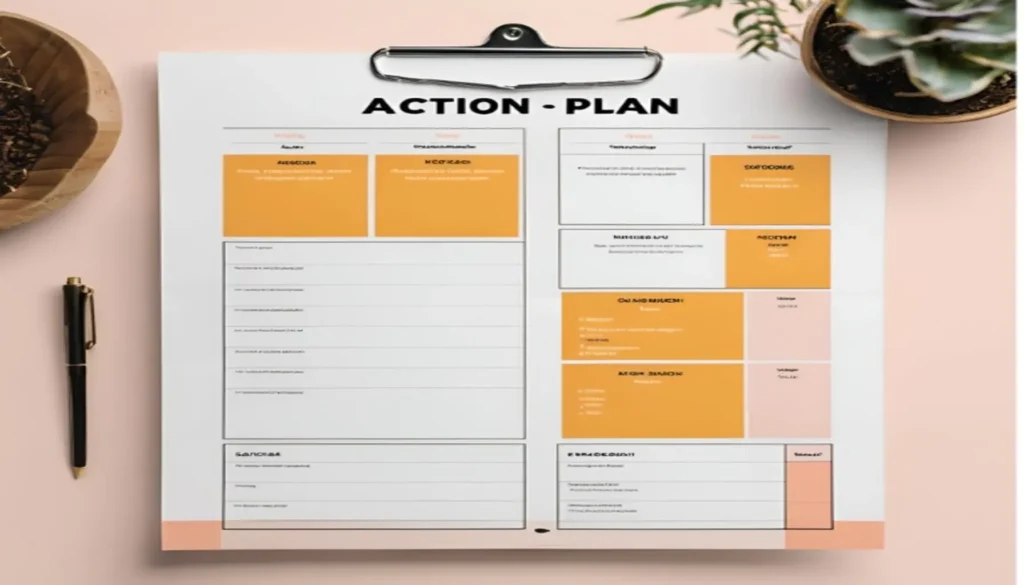
An action plan template breaks down project goals into specific, actionable steps. It ensures everyone knows what needs to be done, by whom, and when.
Essential Elements
- Task description
- Responsible person
- Start and end dates
- Priority level
- Status
- Notes or dependencies
Tips for Effective Action Planning
- Make tasks SMART (Specific, Measurable, Achievable, Relevant, Time-bound).
- Assign clear ownership for each task.
- Include dependencies to show task relationships.
- Regularly review and update the plan.
Sample Action Plan
| Task | Responsible | Start Date | End Date | Priority | Status | Notes |
| Conduct user research | Sarah | 01/02/2024 | 15/02/2024 | High | In Progress | Coordinate with marketing team |
| Develop wireframes | Mike | 16/02/2024 | 28/02/2024 | Medium | Not Started | Dependent on user research |
| Create prototype | Design Team | 01/03/2024 | 15/03/2024 | High | Not Started | —— |
Project Budget Template
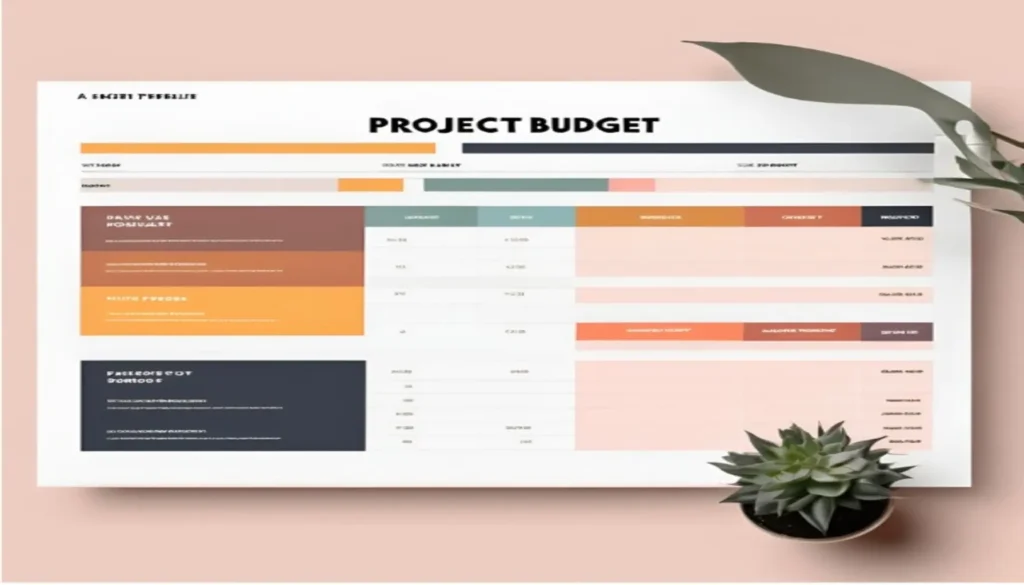
Managing finances is critical for project success. This template helps track expenses, allocate resources, and compare actual costs against the planned budget.
Key Components
- Cost categories (e.g., labor, materials, equipment)
- Planned budget
- Actual expenses
- Variance analysis
- Forecasting
Budget Management Best Practices
- Break down costs into detailed categories.
- Include contingency funds for unexpected expenses.
- Regularly update actual costs and recalculate variances.
- Use formulas to automate calculations and highlight overruns.
Example Budget Summary
| Category | Planned Budget | Actual Expenses | Variance | % Variance |
| Labor | $50,000 | $48,000 | $2,000 | 4% |
| Materials | $30,000 | $32,500 | -$2,500 | -8.3% |
| Equipment | $15,000 | $14,000 | $1,000 | 6.7% |
| Software | $5,000 | $5,000 | $0 | 0% |
| Total | $100,000 | $99,500 | $500 | 0.5% |
Read also : Master Project Management Tools: 2024 Expert Guide
Project Timesheet Spreadsheet

Accurate time tracking is essential for billing, resource management, and productivity analysis. This spreadsheet allows team members to log their hours against specific tasks or projects.
Features to Include
- Employee name and ID
- Project and task names
- Date of work
- Hours worked per task
- Overtime tracking
- Total hours summary
Timesheet Best Practices
- Make it easy for employees to fill out daily.
- Include dropdown menus for project and task selection to ensure consistency.
- Implement data validation to prevent errors (e.g., limit hours to realistic ranges).
- Add formulas to automatically calculate totals and overtime.
Sample Timesheet Layout
| Date | Employee | Project | Task | Regular Hours | Overtime | Total |
| 01/03/2024 | John Doe | Project A | Design | 7 | 1 | 8 |
| 01/03/2024 | John Doe | Project B | Testing | 1 | 0 | 1 |
| 02/03/2024 | John Doe | Project A | Development | 8 | 0 | 8 |
Project Estimate Template
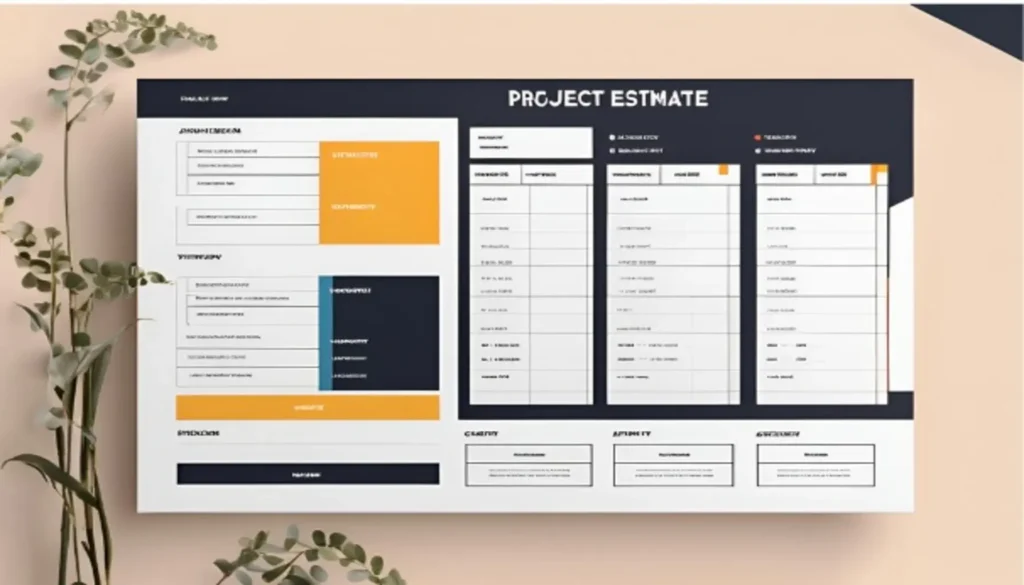
Before a project begins, accurate estimation is crucial. This template helps in forecasting costs, timelines, and resource requirements, providing a solid foundation for project planning.
Key Sections
- Project overview
- Work breakdown structure
- Effort estimation (in hours or days)
- Cost estimation
- Resource requirements
- Assumptions and risks
Estimation Techniques
- Analogous Estimating: Using similar past projects as a base
- Parametric Estimating: Using statistical relationships between historical data and variables
- Three-Point Estimating: Using best case, worst case, and most likely scenarios
Example Three-Point Estimate
| Task | Optimistic | Most Likely | Pessimistic | PERT Estimate |
| Design | 10 days | 15 days | 25 days | 16 days |
| Development | 20 days | 30 days | 45 days | 31 days |
| Testing | 5 days | 10 days | 20 days | 11 days |
PERT Estimate = (Optimistic + 4 * Most Likely + Pessimistic) / 6Project Plan Template
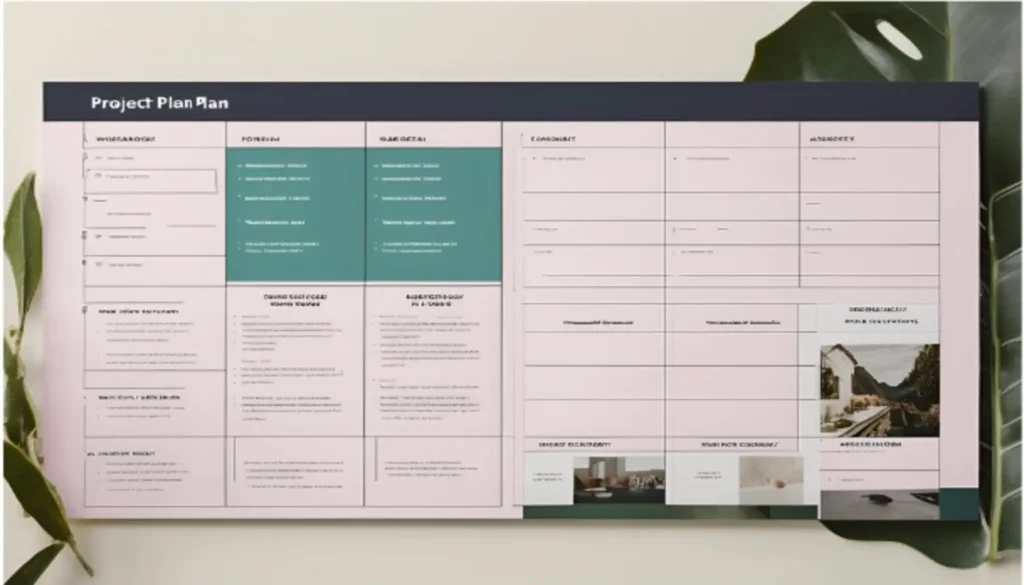
A comprehensive project plan outlines all aspects of a project, including objectives, scope, timelines, resources, and deliverables. This template serves as a roadmap for the entire project.
Essential Components
- Project overview and objectives
- Scope statement
- Deliverables and milestones
- Work breakdown structure (WBS)
- Timeline and schedule
- Resource allocation
- Budget summary
- Risk assessment
- Communication plan
- Quality management plan
Tips for Creating an Effective Project Plan
- Involve key stakeholders in the planning process
- Align the plan with organizational goals and strategies
- Make it detailed yet flexible to accommodate changes
- Include clear success criteria for each deliverable
- Regularly review and update the plan throughout the project lifecycle
Sample Project Plan Outline
- Executive Summary
- Project Goals and Objectives
- Scope Statement
3.1 In Scope
3.2 Out of Scope - Deliverables
4.1 Major Deliverables
4.2 Acceptance Criteria - Milestones and Timeline
- Budget Summary
- Team Structure and Responsibilities
- Risk Management
- Communication Strategy
- Quality Assurance Plan
Weekly Work Schedule Spreadsheet
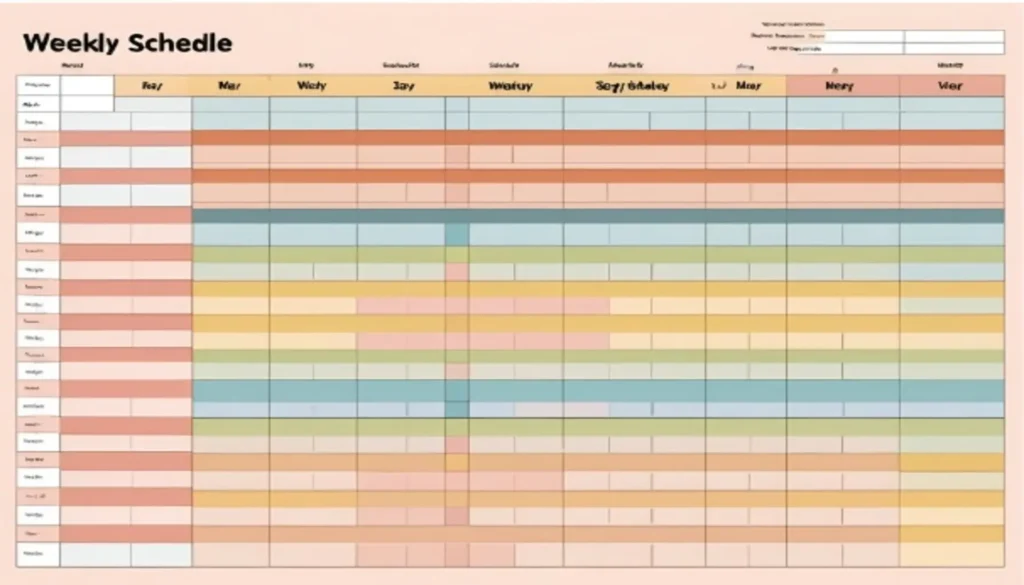
This tool helps in planning and tracking weekly tasks for team members, ensuring efficient time management and task allocation.
Key Features
- Employee names
- Daily task allocation
- Priority levels
- Status tracking
- Weekly summary
Effective Scheduling Tips
- Color-code tasks by project or priority
- Include buffer time for unexpected tasks or meetings
- Balance workload across team members
- Align individual schedules with project milestones
Example Weekly Schedule
| Employee | Monday | Tuesday | Wednesday | Thursday | Friday |
| Alice | Project A: Design | Project A: Design | Project B: Meeting | Project B: Development | Project A: Review |
| Bob | Project C: Testing | Project C: Testing | Project A: Meeting | Project C: Documentation | Project B: Planning |
| Charlie | Project B: Development | Project B: Development | Project B: Meeting | Project A: Support | Project C: Review |
RACI Matrix Template
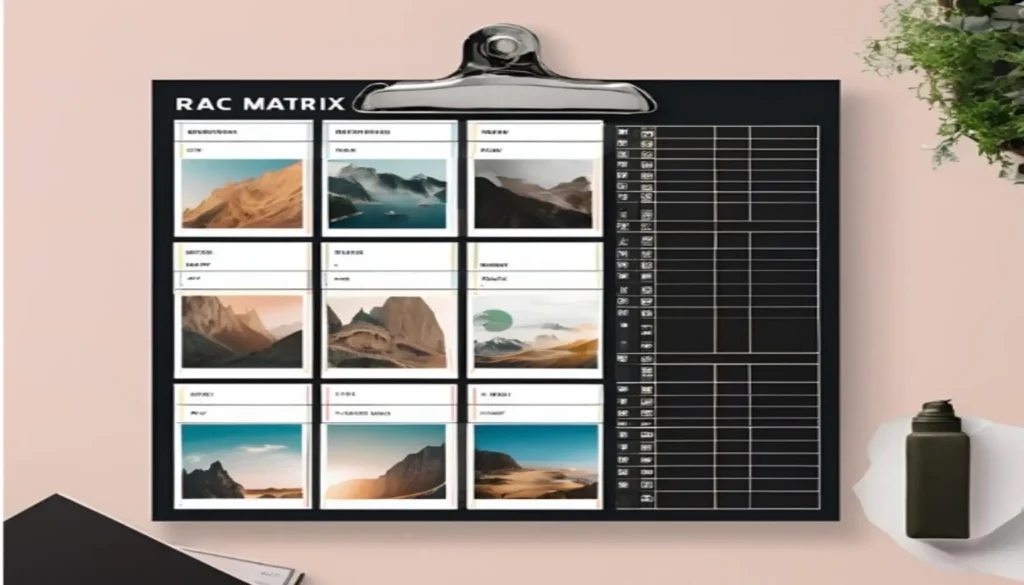
The RACI (Responsible, Accountable, Consulted, Informed) matrix clarifies roles and responsibilities within a project, reducing confusion and improving accountability.
RACI Definitions
- Responsible: Who does the work
- Accountable: Who makes the final decisions and has ultimate ownership
- Consulted: Who must be consulted before a decision or action
- Informed: Who must be informed about the decisions and actions
Benefits of Using a RACI Matrix
- Clarifies roles and responsibilities
- Improves decision-making processes
- Reduces duplication of effort
- Enhances communication
Sample RACI Matrix
| Task | Project Manager | Team Lead | Developer | QA | Stakeholder |
| Requirements Gathering | A | R | C | I | C |
| Design | A | R | C | C | I |
| Development | I | A | R | C | I |
| Testing | I | A | C | R | I |
| Deployment | A | R | C | C | I |
R = Responsible, A = Accountable, C = Consulted, I = Informed
Multiple Project Tracking Template
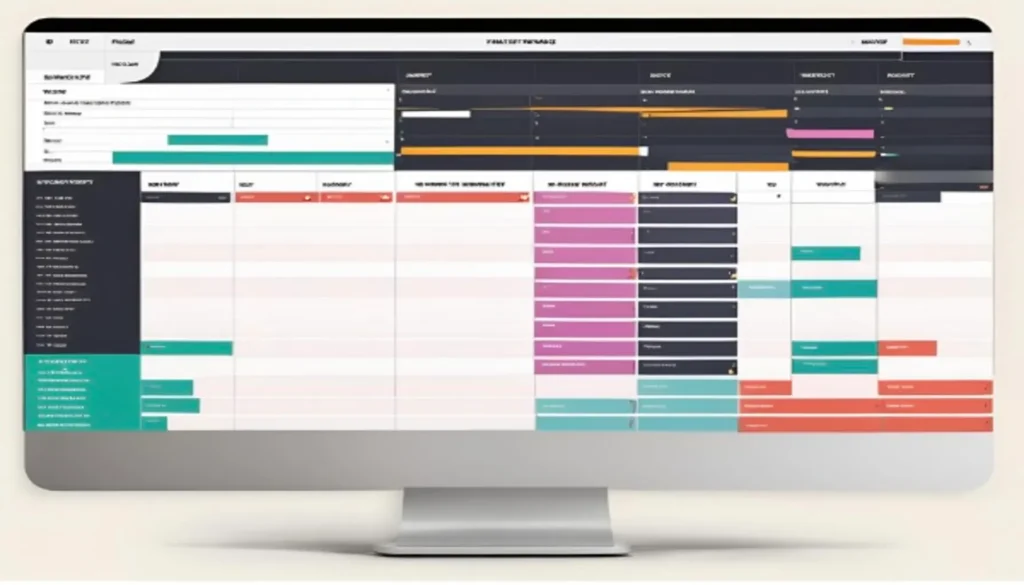
For managers overseeing several projects simultaneously, this template provides a high-level view of progress across multiple initiatives.
Key Elements
- Project name and description
- Project manager
- Start and end dates
- Overall status (e.g., On Track, At Risk, Delayed)
- Budget status
- Key milestones and their status
- Issues and risks summary
Best Practices for Multi-Project Management
- Standardize reporting across all projects
- Use consistent color coding for status indicators
- Focus on key metrics and high-level information
- Include a brief narrative for each project
- Regularly update and review the tracker
Example Multi-Project Tracker
| Project | Manager | Start Date | End Date | Status | Budget | Key Milestone | Issues/Risks |
| Website Redesign | Alice | 01/01/2024 | 31/03/2024 | On Track | 85% | Launch Beta (15/02) | Resource constraint |
| Mobile App | Bob | 15/02/2024 | 30/06/2024 | At Risk | 110% | Complete UI (30/03) | Delayed API integration |
| CRM Upgrade | Charlie | 01/03/2024 | 31/05/2024 | On Hold | 40% | Data Migration (15/04) | Vendor contract issue |
Resource Plan Template
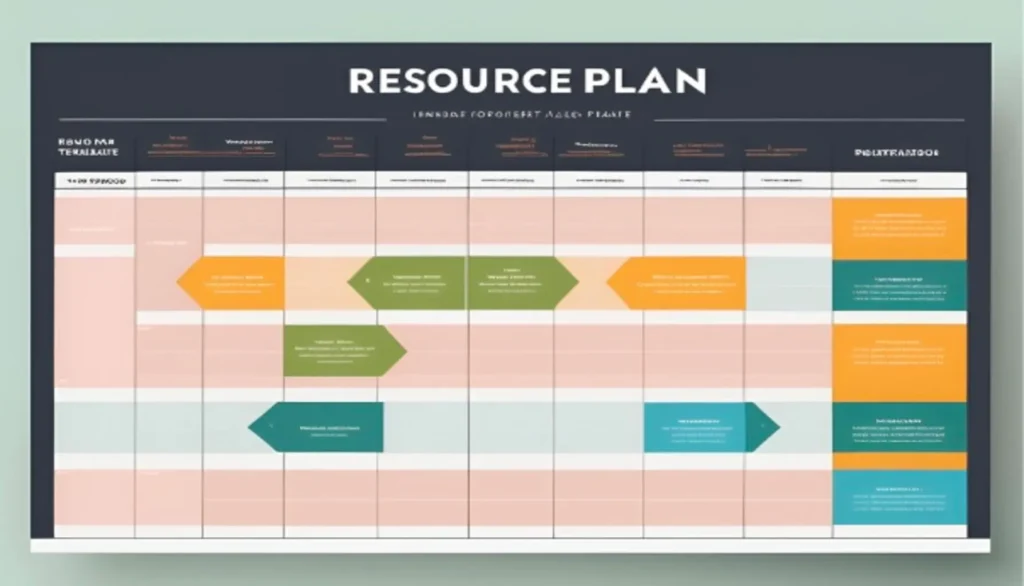
Effective resource management is key to project success. This template helps in allocating and tracking human resources, equipment, and materials across project tasks.
Essential Components
- Resource names and types (e.g., human, equipment, materials)
- Skills and capabilities (for human resources)
- Availability and capacity
- Allocation to specific tasks or projects
- Utilization rates
- Cost rates
Resource Planning Strategies
- Identify all required resources early in the project
- Consider both full-time and part-time allocations
- Plan for peak periods and potential bottlenecks
- Regularly review and adjust allocations based on project needs
Sample Resource Allocation Chart
| Resource | Type | Skills | Project A | Project B | Project C | Total Allocation |
| John | Human | Java, Python | 50% | 30% | 20% | 100% |
| Server 1 | Equipment | —- | 70% | 30% | 0% | 100% |
| Jane | Human | UX Design | 0% | 100% | 0% | 100% |
| 3D Printer | Equipment | —- | 0% | 60% | 40% | 100% |
PMO KPI Dashboard Template

For Project Management Offices (PMOs), this dashboard template tracks key performance indicators (KPIs) across projects, providing insights into overall portfolio health.
Common PMO KPIs
- Project success rate
- Budget variance
- Schedule variance
- Resource utilization
- Stakeholder satisfaction
- Risk mitigation effectiveness
- Quality metrics (e.g., defect rate, rework percentage)
Dashboard Design Tips
- Use charts and graphs for visual representation
- Include trend analysis to show changes over time
- Provide both high-level summary and drill-down capabilities
- Use conditional formatting to highlight areas needing attention
Example PMO KPI Dashboard Layout
- PMO Performance Dashboard
- Overall Portfolio Health: 85% (↑3%)
- Project Success Rate
- [Pie Chart: Successful vs Challenged vs Failed Projects]
- Budget Performance
- [Bar Chart: Planned vs Actual Budget across projects]
- Schedule Performance
- [Line Graph: Schedule variance trend over last 6 months]
- Resource Utilization
- [Heat Map: Resource utilization across departments]
- Top Risks
- Vendor delays (Impact: High, Probability: Medium)
- Skill shortage in AI development (Impact: Medium, Probability: High)
- Regulatory changes (Impact: High, Probability: Low)
- Action Items
- Conduct resource planning workshop
- Review and update risk mitigation strategies
- Implement new project health check process
Stakeholder Analysis Spreadsheet
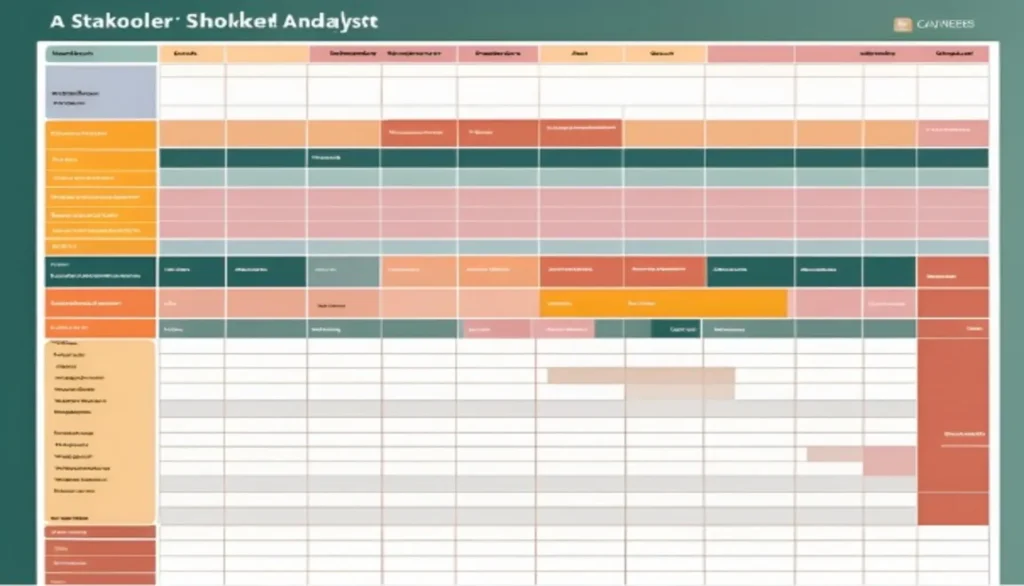
Understanding and managing stakeholders is crucial. This spreadsheet helps identify, categorize, and plan engagement strategies for various project stakeholders.
Key Components
- Stakeholder name and role
- Interest level
- Influence level
- Current support level
- Desired support level
- Key concerns or expectations
- Engagement strategy
Stakeholder Analysis Process
- Identify all potential stakeholders
- Assess their interest and influence
- Determine current and desired support levels
- Develop tailored engagement strategies
- Regularly review and update the analysis
Stakeholder Mapping Matrix
| Stakeholder | Interest | Influence | Current Support | Desired Support | Key Concerns | Engagement Strategy |
| CEO | High | High | Medium | High | ROI, Market position | Regular executive briefings |
| Dev Team | High | Medium | High | High | Technical challenges, deadlines | Weekly stand-ups, technical reviews |
| End Users | Medium | Low | Low | High | Usability, features | Beta testing, feedback surveys |
| Regulators | Low | High | Neutral | Positive | Compliance, safety | Proactive reporting, invitations to demos |
Tips for Effective Stakeholder Management
- Prioritize stakeholders based on their influence and interest
- Tailor communication strategies to each stakeholder group
- Regularly update the analysis as the project progresses
- Use the analysis to inform your communication plan and risk management strategy
Project Scope Template
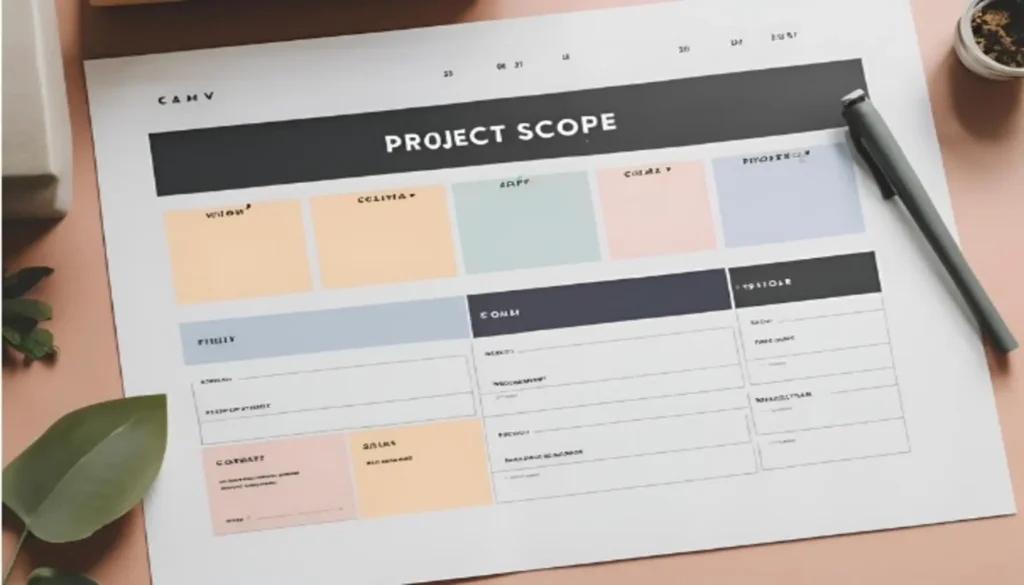
Clearly defining project scope is essential to prevent scope creep. This template outlines project boundaries, deliverables, and exclusions.
Key Elements of a Scope Statement
- Project objectives
- Deliverables
- Project boundaries (what’s included and excluded)
- Constraints and assumptions
- Success criteria
- Approval requirements
Best Practices for Scope Management
- Be specific and avoid ambiguous language
- Use measurable terms where possible
- Clearly state what is out of scope
- Get formal sign-off from key stakeholders
- Establish a change control process for scope modifications
Sample Scope Statement Structure
- Project Overview
1.1 Background
1.2 Objectives - In Scope
2.1 Deliverable 1
2.2 Deliverable 2
2.3 Deliverable 3 - Out of Scope
3.1 Exclusion 1
3.2 Exclusion 2 - Constraints
4.1 Time
4.2 Budget
4.3 Resources - Assumptions
- Success Criteria
- Approval
PMO Action Plan Template
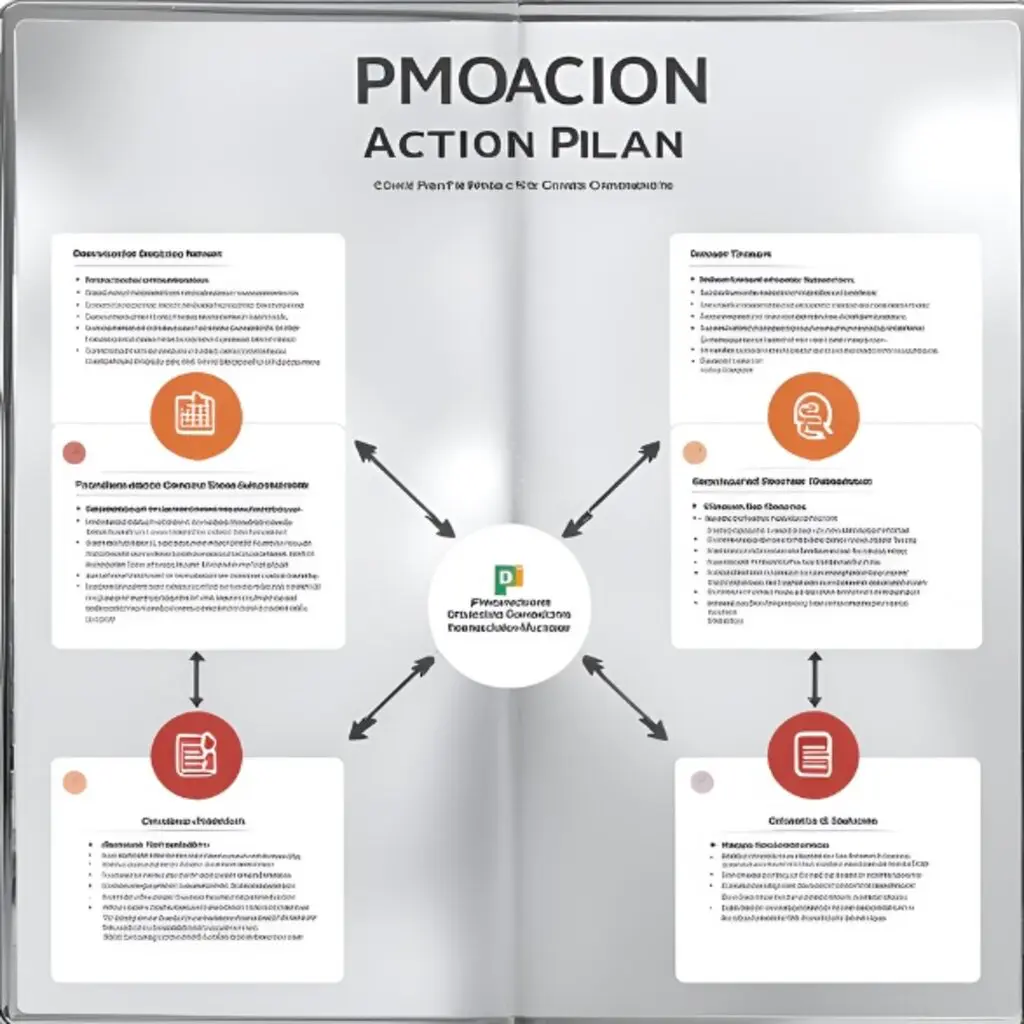
Specifically for Project Management Offices (PMOs), this template helps in planning and tracking strategic initiatives to improve project management practices across the organization.
Key Components
- Strategic objective
- Action items
- Responsible parties
- Timelines
- Success metrics
- Status updates
PMO Strategic Focus Areas
- Standardization of PM practices
- Portfolio management optimization
- Resource management improvement
- PM capability development
- Stakeholder engagement enhancement
- Tool and technology adoption
Sample PMO Action Plan
| Strategic Objective | Action Item | Responsible | Timeline | Success Metric | Status |
| Standardize PM Methodology | Develop PM handbook | PMO Director | Q1 2024 | Handbook published and distributed | In Progress |
| Enhance PM Skills | Conduct PM certification program | Training Manager | Q2-Q3 2024 | 80% of PMs certified | Planning |
| Improve Resource Management | Implement resource management software | IT Manager, PMO | Q3-Q4 2024 | Software adopted by all departments | Not Started |
Cost Estimation Plan Template
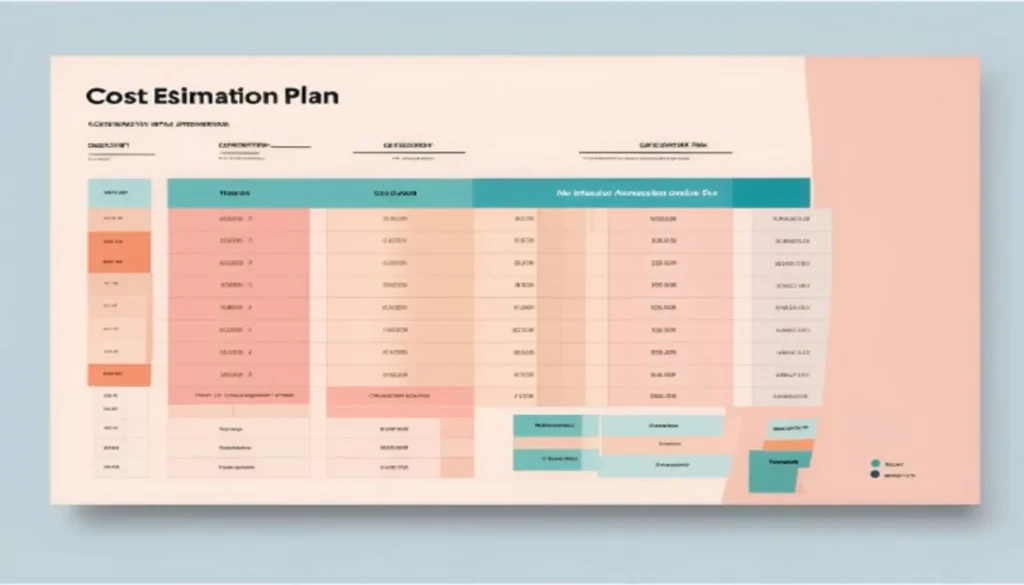
More detailed than a basic budget, this template aids in breaking down and estimating costs for complex projects, considering various factors and contingencies.
Essential Elements
- Work Breakdown Structure (WBS)
- Cost categories (direct, indirect, fixed, variable)
- Estimation techniques used
- Basis of estimates
- Contingency and management reserves
- Cost baseline
Cost Estimation Techniques
- Analogous estimating
- Parametric estimating
- Bottom-up estimating
- Three-point estimating
- Expert judgment
Sample Cost Estimation Breakdown
| WBS Element | Estimated Cost | Estimation Method | Basis of Estimate | Contingency |
| 1.1 Planning | $50,000 | Analogous | Similar past project | 10% |
| 1.2 Design | $100,000 | Three-point | (80k + 4*100k + 140k) / 6 | 15% |
| 1.3 Development | $300,000 | Bottom-up | Sum of task estimates | 20% |
| 1.4 Testing | $75,000 | Parametric | $500 per test case | 10% |
Total Estimated Cost: $525,000 Management Reserve: $52,500 (10% of total) Total Budget: $577,500
Schedule Management Template
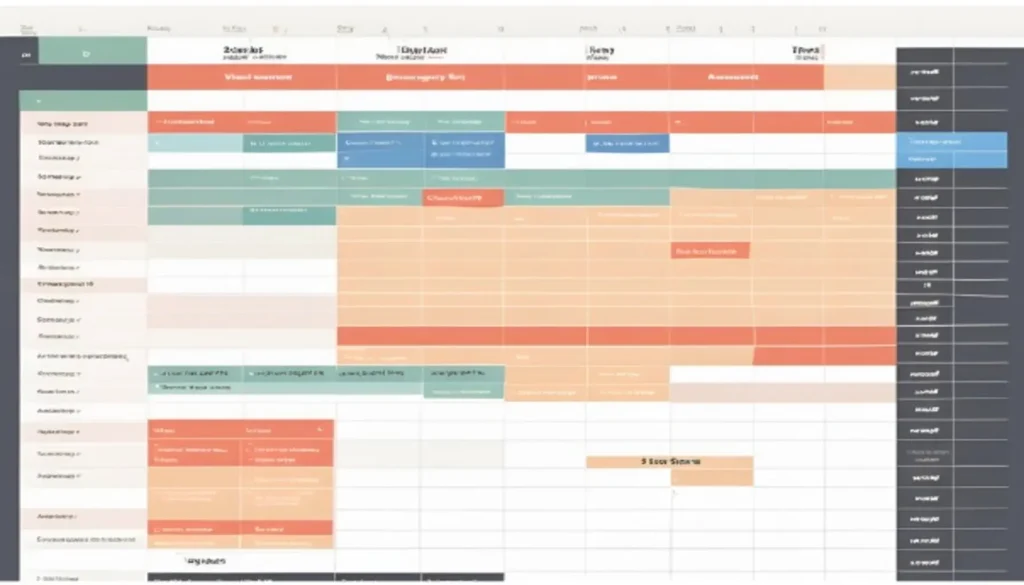
This tool helps in creating and managing detailed project schedules, including task dependencies, critical paths, and resource allocation over time.
Key Features
- Task list with hierarchical structure
- Start and end dates
- Duration
- Dependencies
- Resource assignments
- Progress tracking
- Critical path identification
Schedule Management Best Practices
- Break down tasks to manageable sizes (usually 1-2 weeks max)
- Identify and manage dependencies carefully
- Allocate resources realistically, avoiding over-allocation
- Include buffer time for uncertainties
- Regularly update and re-baseline as needed
Example Schedule Management Table
| Task ID | Task Name | Duration | Start Date | End Date | Dependencies | Resource | Progress |
| 1 | Project Initiation | 5d | 01/01/2024 | 05/01/2024 | —— | PM | 100% |
| 2 | Requirements Gathering | 10d | 06/01/2024 | 15/01/2024 | 1 | BA | 80% |
| 3 | System Design | 15d | 16/01/2024 | 30/01/2024 | 2 | Architect | 50% |
| 4 | Development Phase 1 | 20d | 31/01/2024 | 19/02/2024 | 3 | Dev Team | 25% |
| 5 | Testing Phase 1 | 10d | 20/02/2024 | 29/02/2024 | 4 | QA Team | 0% |
Project Risk Template
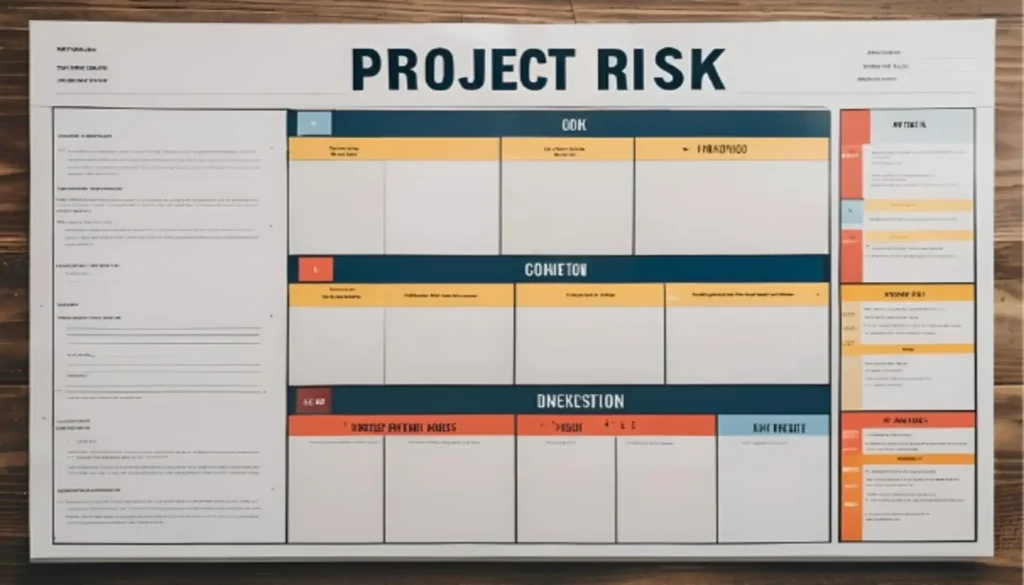
Risk management is an ongoing process. This template assists in identifying, assessing, and planning responses to potential project risks.
Key Components
- Risk description
- Risk category
- Probability
- Impact
- Risk score (Probability x Impact)
- Risk owner
- Mitigation strategy
- Contingency plan
Risk Management Process
- Risk identification
- Risk assessment
- Risk prioritization
- Risk response planning
- Risk monitoring and control
Sample Risk Register
| Risk ID | Description | Category | Probability | Impact | Score | Owner | Mitigation | Contingency |
| R1 | Vendor delay | External | Medium | High | 12 | Procurement Manager | Early engagement, penalties in contract | Identify backup vendors |
| R2 | Scope creep | Project | High | Medium | 12 | Project Manager | Early engagement, penalties in contract | Re-prioritize features |
| R3 | Team member departure | Resource | Low | High | 4 | HR Manager | Cross-training, documentation | Maintain bench strength |
Production Schedule Template
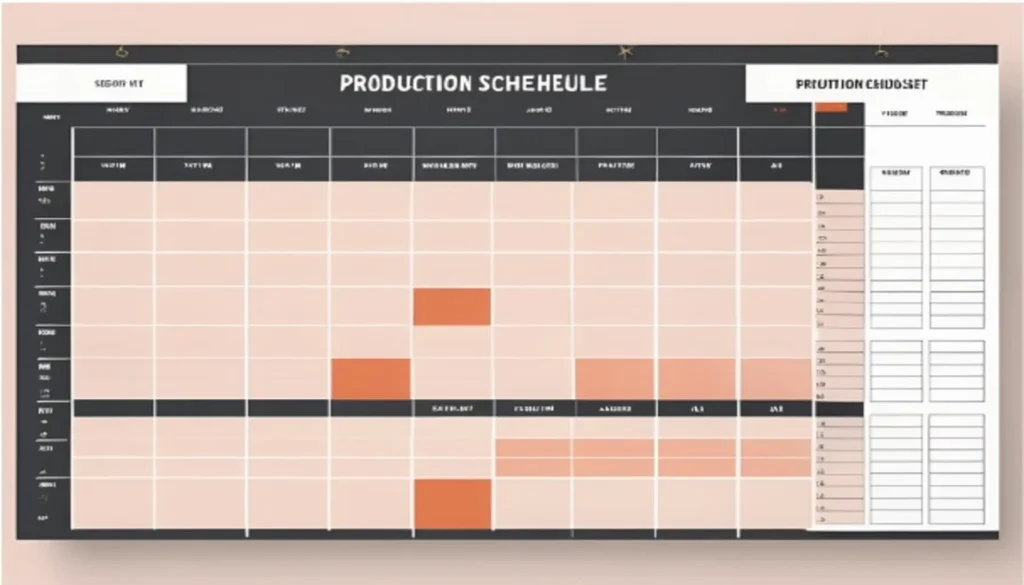
For manufacturing or production-oriented projects, this template helps in planning and tracking production cycles, inventory, and resource utilization.
Key Elements
- Production orders
- Product details
- Quantities
- Start and end dates
- Resource requirements
- Machine/workstation allocation
- Quality checks
Production Scheduling Best Practices
- Consider lead times and setup times
- Balance workload across resources
- Account for maintenance schedules
- Integrate with inventory management
- Allow flexibility for rush orders or changes
Example Production Schedule
| Order ID | Product | Quantity | Start Date | End Date | Machine | Operator | Quality Check |
| PO-001 | Widget A | 1000 | 01/03/2024 | 03/03/2024 | M1 | John | QC1 |
| PO-002 | Gadget B | 500 | 02/03/2024 | 04/03/2024 | M2 | Sarah | QC2 |
| PO-003 | Widget C | 750 | 03/03/2024 | 05/03/2024 | M3 | Mike | QC1 |
Cost Benefit Analysis Spreadsheet
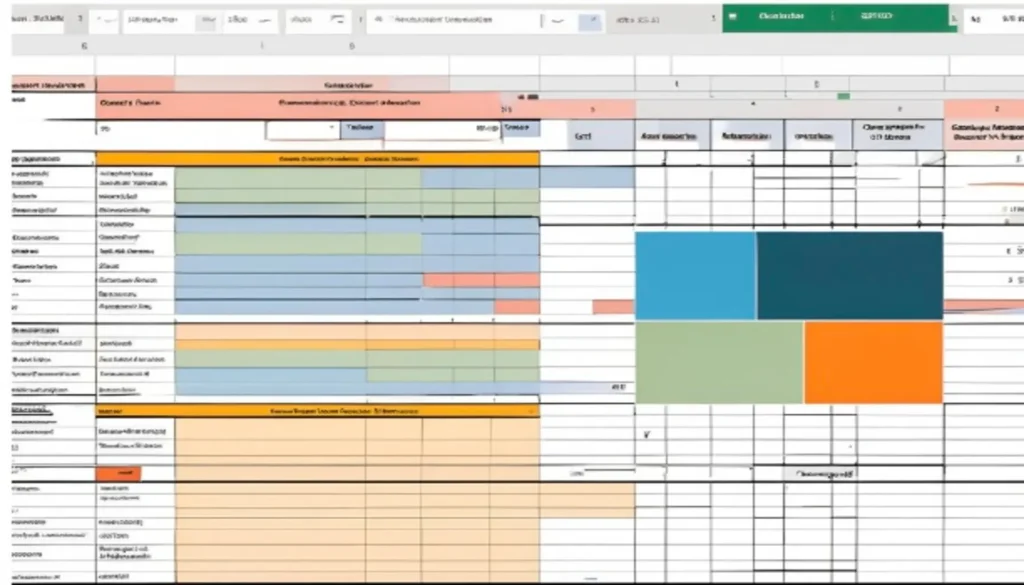
This spreadsheet aids in evaluating the financial viability of a project by comparing its costs against expected benefits, supporting informed decision-making.
Key Components
- Initial costs
- Ongoing costs
- Expected benefits (monetary and non-monetary)
- Net Present Value (NPV)
- Return on Investment (ROI)
- Payback period
- Benefit-Cost Ratio
CBA Best Practices
- Include all relevant costs and benefits
- Consider the time value of money (use discounted cash flows)
- Perform sensitivity analysis for different scenarios
- Include both quantitative and qualitative factors
- Review and update the analysis periodically
Sample Cost-Benefit Analysis
| Year | Costs | Benefits | Net Cash Flow | Cumulative Cash Flow |
| 0 | $100,000 | $0 | -$100,000 | -$100,000 |
| 1 | $20,000 | $50,000 | $30,000 | -$70,000 |
| 2 | $20,000 | $75,000 | $55,000 | -$15,000 |
| 3 | $20,000 | $100,000 | $80,000 | $65,000 |
- NPV (10% discount rate): $27,615
- ROI: 65%
- Payback Period: 2.19 years
- Benefit-Cost Ratio: 1.4
Project Closure Template
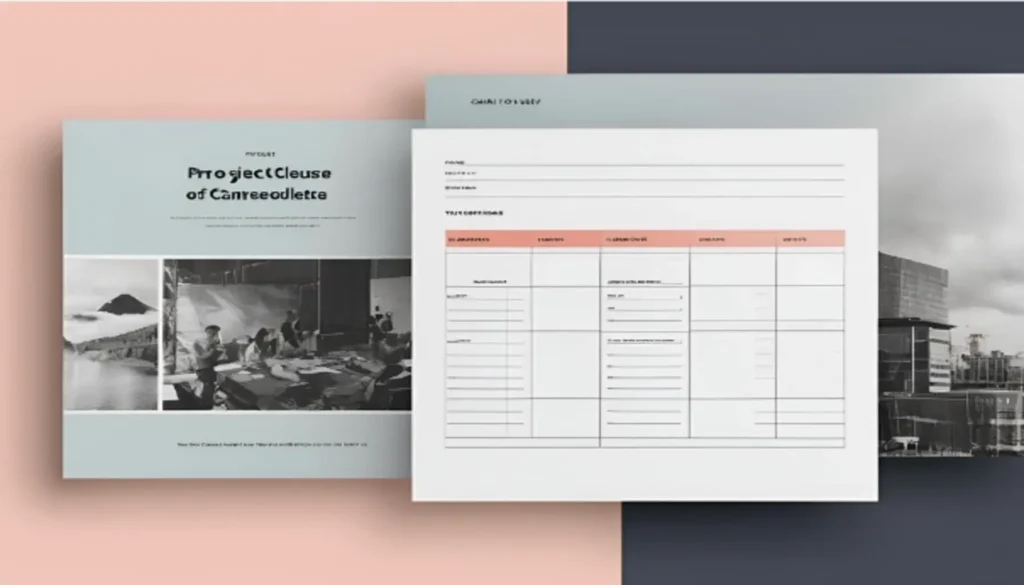
Proper project closure is often overlooked but is crucial for organizational learning. This template guides the process of formally closing a project, including final reporting, lessons learned, and archiving project information.
Key Elements
- Project summary
- Objectives achieved
- Deliverables completed
- Final budget reconciliation
- Outstanding issues or risks
- Lessons learned
- Stakeholder sign-off
- Archiving plan
Project Closure Best Practices
- Conduct a formal closure meeting
- Ensure all deliverables are accepted
- Document lessons learned thoroughly
- Recognize team contributions
- Plan for knowledge transfer and continuity
Sample Project Closure Checklist
- All deliverables completed and accepted
- Final project report prepared and distributed
- Financial closure (all invoices paid, accounts closed)
- Team performance evaluations completed
- Lessons learned session conducted and documented
- Project documentation archived
- Client/stakeholder sign-off obtained
- Project resources released
- Post-implementation review scheduled
Conclusion
These 21 Excel spreadsheets and templates cover a wide range of project management needs, from planning and execution to monitoring and closure. By leveraging these tools, project managers can enhance their efficiency, improve communication, and increase the likelihood of project success.
Remember, while these templates provide a solid foundation, they should be customized to fit the specific needs of your projects and organization. Effective use of these tools, combined with strong leadership and communication skills, can significantly streamline project management processes and contribute to better project outcomes.
As you incorporate these templates into your workflow, you’ll find yourself better equipped to handle the complexities of modern project management. Regularly review and update your processes, and don’t hesitate to adapt these templates as your projects and organization evolve.
By mastering these Excel-based project management tools, you’ll be well on your way to delivering successful projects consistently and efficiently.
Remember, the goal of these templates is to enhance project management efficiency and effectiveness. Be open to adapting them as your team’s needs evolve and as you gather more experience using them in your projects.
Frequently Asked Questions (FAQs)
To further assist you in leveraging these Excel-based project management tools, we’ve compiled a list of frequently asked questions:
Why use Excel for project management when there are specialized PM software options available?
Excel remains a popular choice for project management due to its:
- Accessibility: Most professionals are already familiar with Excel.
- Flexibility: It’s easy to customize templates to fit specific project needs.
- Cost-effectiveness: Many organizations already have Excel licenses.
- Integration: Seamless integration with other Microsoft Office tools.
- Offline capabilities: Can be used without internet connection.
However, for larger, more complex projects or organizations managing multiple projects simultaneously, specialized PM software might offer more robust features.
How often should I update these project management spreadsheets?
The frequency of updates depends on the specific template and project needs:
- Daily: Timesheets, task-level progress tracking
- Weekly: Status reports, schedule updates, risk registers
- Monthly: Budget tracking, resource allocation updates
- Quarterly: Portfolio-level reviews, PMO KPI dashboards
- As needed: Stakeholder analysis, project plans (when changes occur)
Regular updates ensure that your project data remains accurate and useful for decision-making.
Can these Excel templates be used for Agile project management?
While many of these templates are designed with traditional project management in mind, several can be adapted for Agile methodologies:
- Sprint Backlog: Modify the Action Plan template
- Burndown Chart: Adapt the Gantt Chart template
- Sprint Planning: Use the Weekly Work Schedule
- Product Backlog: Adjust the Project Plan template
For full Agile functionality, you might need to combine or modify multiple templates.
How can I ensure data consistency across multiple project spreadsheets?
To maintain data consistency:
- Use data validation features in Excel to limit input options.
- Create a central data source for common information (e.g., team member names, project codes).
- Use Excel’s VLOOKUP or INDEX-MATCH functions to pull data from centralized sheets.
- Implement a change control process for updating shared data.
- Consider using Excel’s SharePoint integration for real-time collaboration.
Are these templates suitable for small businesses or solo entrepreneurs?
Absolutely! Many of these templates can be scaled down for smaller projects:
- For solo entrepreneurs: Focus on the Project Plan, Budget Template, and Gantt Chart.
- For small businesses: Add the Resource Plan, Risk Template, and Status Report.
Simplify the templates as needed, keeping only the most relevant sections for your work.
How can I improve the visual appeal of these spreadsheets for presentations?
To enhance the visual appeal:
- Use consistent color coding across all templates.
- Incorporate company branding (logos, color schemes).
- Utilize Excel’s conditional formatting for dynamic visual cues.
- Create dashboard views with charts and graphs for key metrics.
- Use Excel’s sparklines feature for compact trend visualization.
- Consider using Excel’s newer chart types like Treemap or Sunburst for complex data.
Can these templates be integrated with other project management tools?
While Excel templates are standalone tools, you can integrate them with other systems:
- Use Power Query to import data from databases or other software.
- Export data to CSV format for use in other tools.
- Utilize Microsoft Power Automate (formerly Flow) for automated data transfer.
- For Microsoft 365 users, consider using Excel Online for better integration with Teams and SharePoint.
How do I handle version control with these Excel templates?
Version control is crucial for maintaining accurate project data. Here are some strategies:
- Use clear file naming conventions (e.g., ProjectName_TemplateType_YYYYMMDD).
- Implement a check-in/check-out system if multiple people update the file.
- Use Excel’s built-in Track Changes feature.
- Store files in a version-controlled environment like SharePoint or Git.
- Regularly archive versions at key project milestones.
Are there any security concerns with storing sensitive project data in Excel?
While Excel is widely used, it’s important to consider security:
- Use Excel’s built-in encryption features for sensitive files.
- Restrict access to files using password protection or file system permissions.
- Be cautious when sharing files externally; consider using Excel Online for controlled sharing.
- Regularly back up your files to prevent data loss.
- For highly sensitive data, consider using more secure database solutions.
How can I ensure team adoption of these Excel templates?
To encourage team adoption:
- Involve team members in the customization process to ensure the templates meet their needs.
- Provide training sessions on how to use and update the templates.
- Start with a few key templates and gradually introduce others to avoid overwhelming the team.
- Regularly solicit feedback and make improvements based on team input.
- Lead by example, consistently using and referencing the templates in project discussions.



